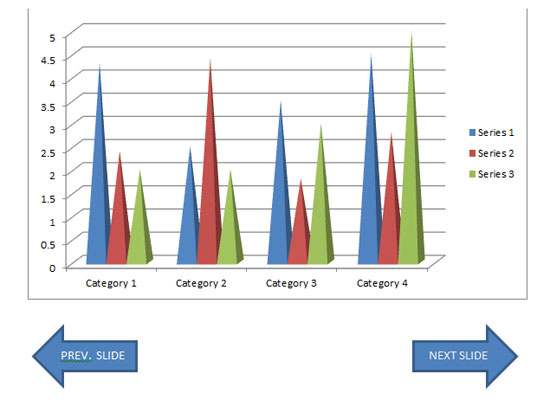2. Manual transitions in a presentation
This means that the current slide in the presentation remains in view until a person signals that another is to be shown.

Signaling is often achieved by mouse click, key stroke, a hand held remote control or maybe a touch screen.
The advantage of manual control is that it allows for human interaction.
For instance, the presenter may be manually clicking to show one slide after another, but then a member of the audience asks for clarification on a point. The presenter can now keep the slide in view whilst they are explaining. Perhaps the audience member wants to see a previous slide as well, so the presenter can easily flick back and forth.
The timing of the presentation is entirely down to the presenter. For instance if they find that time is running out, they may jump a few slides to catch back.
In manually controlled information booths, the viewer can choose to go from one slide to another at their own pace.
| Advantages of the manual transition method |
|---|
| The user can spend as long as they like on each slide before they move to the next one |
| The user can select which slides they want to see and in what order |
| The presenter can control the presentation whilst they are talking |
| The presenter can start, stop and halt the presentation whenever they wish. They can jump back and forth between slides to clarify points |
| The presenter can allow audience participation / questions |
challenge see if you can find out one extra fact on this topic that we haven't already told you
Click on this link: Manual Slide Transitions
